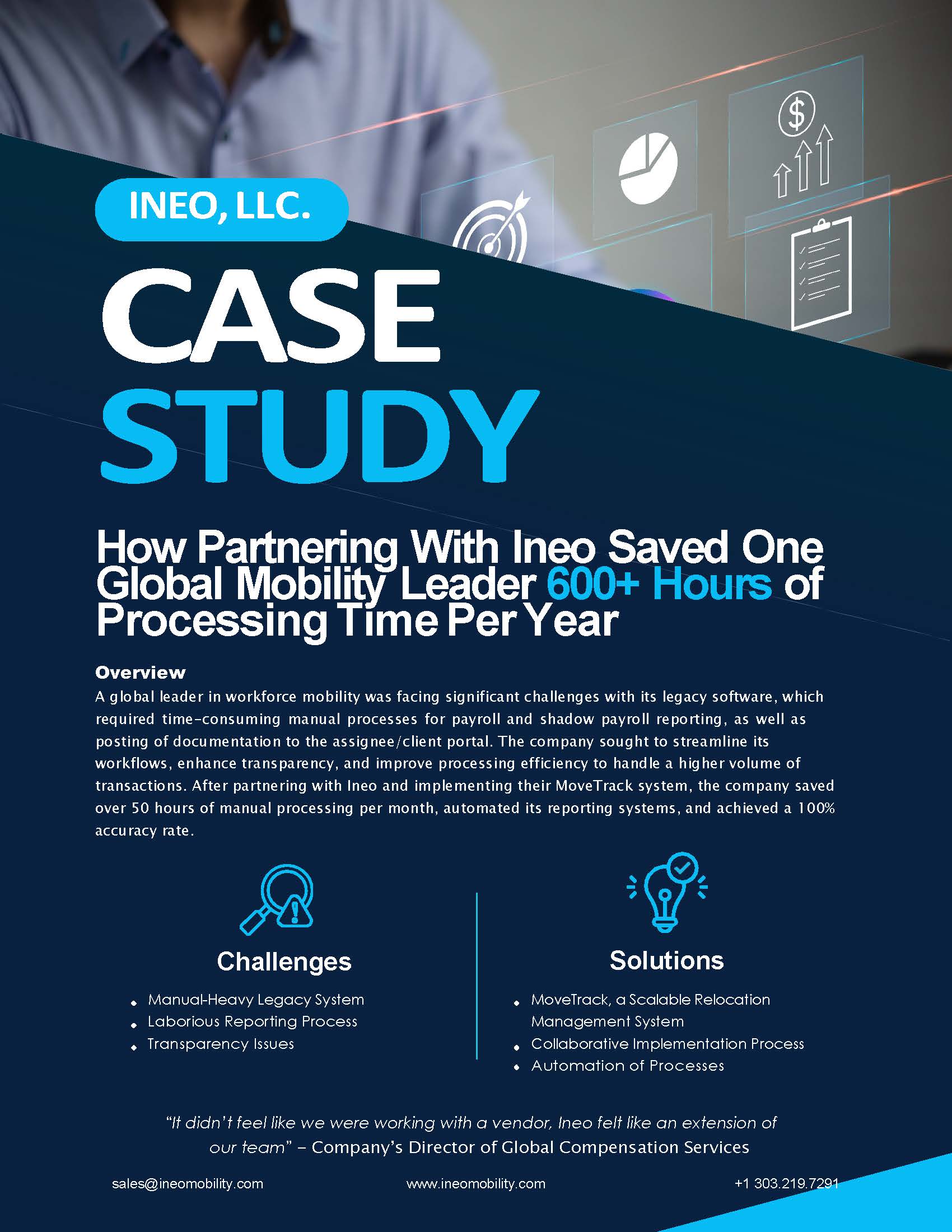Should You Add MIDA to Your Relocation Policy?
There are many reasons why a company should consider including a mortgage interest differential allowance, also known as MIDA, in their mobility policy given the current economic climate.
At the risk of restating the obvious, mortgage interest rates are up over this time last year. Indeed, after falling to record lows in early 2021, they rose at a record-breaking pace in 2022 and continue to raise in 2023. None of that comes as a surprise given that the Federal Reserve Board has steadily increased its key interest rate in response to inflationary pressures that grew out of the pandemic, as well as from a decade of low-interest rates dating back to the Great Recession of 2008.
To make matters more precarious for the home mortgage market, the Federal Reserve Board is not done with its war on inflation and is poised for another quarter-point rate increase at its next committee meeting. There’s speculation that another rate increase will follow soon after. That’s because a recent economic report shows that inflation moderated but not as quickly as hoped. It’s as strong an indicator as you can find that home financing is only going to continue to get more expensive. In short, the pressure on enterprises to offer a MIDA to relocation compensation will only grow.
Is it time to add MIDA to relocation compensation?
So, what does this mean for those guiding and implementing domestic and international assignments? If you haven’t done so already, some of the points below may convince you that it’s high time you investigated the benefits of implementing a MIDA in your relocation packages.
Higher mortgage interest rates impact relocation costs
Probably the most urgent reason why your company should add MIDA to relocation compensation packages is due to the higher cost of financing home purchases. Mortgage rates have more than doubled within two years, from as low as 2.65% to nearly 7+%. That means most employees and new hires will be extremely reluctant to move in order to take a new role in a new location without some financial help to soften the blow.
The best way to understand the impact a doubling of mortgage rates will have on employees you want to relocate is to look at the cost of purchasing a home in today’s market.
Say you have an employee who managed to lock in a home loan at a low rate in early 2021. In 2023, you are now asking them to move to a completely new location where they will presumably want to own a home to replace the one they are giving up. Normally, in a healthy functioning market, when the cost of financing rapidly increases for homes, usually there is a corresponding drop in purchase prices. That hasn’t happened. The current housing market dynamics have not seen home prices drop by much due to persistently low inventory levels, ongoing demand for homes, and a reluctance among homeowners to give up their low-interest rates.
In the meantime, the doubling of mortgage interest rates has radically increased the cost of borrowing. When your employee looks for a home, they will see a significant loss of purchasing power and will end up spending far more over the life of a 30-year mortgage than what they are currently experiencing. That’s a financial penalty many employees will be extremely reluctant to take in order to assume a new role in a company.
This example illustrates the lost purchasing power many homeowners face in an era of higher mortgage interest rates:
- Home financing circa April 2001: $500,000 home purchase x 2.65% interest rate = $1,611 monthly mortgage & interest payment.
- Home financing in mid-February 2023: $500,000 home purchase x 6.61% interest rate = $2,557 monthly mortgage & interest payment.
The increased cost in monthly financing comes out to $946, which is a lot for many workers to shoulder when asked to make a move for a new role within a company. What’s more, the employee will see that increase in their housing payments as a reduction to their income to the tune of nearly $12,000 annually.
It’s rare to find an employee who is willing to take a financial hit in order to move into a new role. That’s why many companies are now strongly advised to add MIDA to relocation compensation, at least for the next few years. After all, a MIDA can greatly ease the financial burden of an otherwise stressful transition. Failing to do so could negatively impact your employee assignment initiatives and lead to a drop in new hires that are needed to fill key roles within the company.
Scarcity of talent
Another reason why enterprises should add a MIDA with relocation compensation is the simple fact that the unemployment rate in America recently dropped to 3.4%, which is the lowest it’s been since May 1969. That’s astonishing considering the past four decades have seen some impressive Bull Markets. Despite recent layoffs resulting from a cooling economy, and many high-profile tech companies that over hired during the pandemic, good talent is still hard to find and retain.
One need only look at January’s job report, which surprised many economists by adding 517,000 jobs and snapping a five-month streak of slowing job growth. It seems that the message that the economy is now cooling hasn’t been received by companies lacking talent. As recently as December 2022 employers had 11 million job openings, roughly double the number of people looking for work.
Offering a MIDA with relocation compensation, especially during a workforce imbalance that currently favors employees, has become essential for attracting and retaining the talent you need to compete at the highest levels.
Retaining employees is harder
Why should scarcity of talent matter when you already have talent? Because now more than ever employees can find roles in other companies. Scarcity and the imbalance between job openings and available talent mean that the competition will pounce on employees who feel underappreciated, underdeveloped, or underpaid.
An estimated 30% of workers changed their jobs in 2022. That’s nearly one-third of the workforce changing jobs in one year. The primary reason for changing? A strong majority cite better compensation as a primary motivator. The trend towards changing jobs may slow if the economy continues to cool and layoffs grow across more industries. Recent economic reports, such as the news that consumers increased spending by a surprising 3% in January 2023, are not bearing that scenario out as of now.
The upshot is that the Federal Reserve Board will continue to increase its rate as long as it needs to in order to see inflationary pressures begin to slow down the economy. That means that mortgage rates will likely remain high relative to recent past years, putting the financial pinch on any employees asked to move for new roles within a company.
The Ineo MIDA advantage
If you are looking to add MIDA to relocation compensation, it’s certainly wise to not delay much longer, especially if you hope to attract some of the best talent needed to give you the competitive edge you seek in the marketplace. It also sends a strong signal to your top performers that you do not expect them to take a financial hit as they seek ways to challenge themselves and grow professionally.
Some may not be sure how to develop and implement a MIDA at their company. It’s understandable given that relocation compensation is complicated enough without having to calculate the impact of mortgage interest differentials between one location and another. It often makes sense to consult with experts who know far more about the financial implications of MIDA, both from a compensation and tax perspective.
Ineo has financial experts with decades of experience helping companies navigate the financial intricacies of relocating employees domestically and internationally. We can help you develop the calculation methodology needed to determine the best possible outcome for the bottom line of both the company and the employee.
Get started with an Ineo expert today to discuss how your company can implement MIDA during times of economic uncertainty.
Global Mobility Resources
Learn more about what’s going on at Ineo and insights into the complex world of global mobility from the industry’s top thought leaders and innovators.
Request A Demo
Whether you are new to the world of global mobility or you’ve been in the business for a while, Ineo is here to assist you.
The best way to learn how Ineo’s global mobility software can help your company revolutionize your global mobility program and support your business strategy is to see it in a demo.
Fill out this form to get started today.
Get Started






